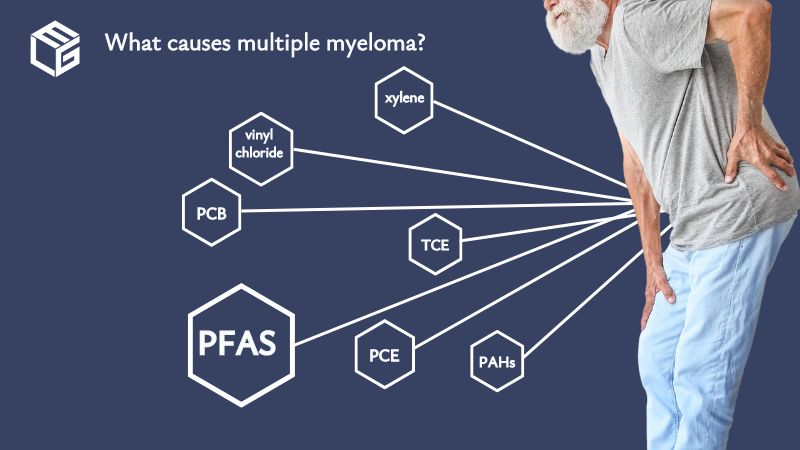PFAS exposure on military bases leads to a greater risk of developing multiple myeloma
Because hazardous materials are necessary for conducting military operations, chemical exposure is inevitable for servicemen who are stationed at military bases. The reality is that most military bases around the U.S. have had a hard history of exposure, which stemmed from the chemicals inside of these materials. One class of toxic substances that were widely employed and also abused were per- and polyfluoroalkyl substances, or PFAS. Exposure to PFAS has been shown to cause great harm to human health, including multiple myeloma.
It is important to know that you can be affected through multiple routes of exposure other than your equipment, as PFAS can lurk in drinking water or get carried away in airborne particles, so there is a risk of developing this disease for anyone who spent time at a military base that is known to be contaminated.
Currently, there are over 700 installations where PFAS were identified. Out of these 700 military sites, approximately 600 are designated as Superfund sites by the Department of Defense, meaning they are the most urgent places for cleanup due to being so severely contaminated. In addition to PFAS, many other substances fall within Superfund's scope at these bases:
- acetone
- benzene
- 2-butanone
- carbon tetrachloride
- trichloroethylene (TCE)
- perchloroethylene (PCE)
- chlordane
- 1,1- dichloroethane
- 1,2- dichloroethane
- methylene chloride
- polychlorinated biphenyl (PCB)
- polycyclic aromatic hydrocarbons (PAHs)
- tetrachloroethylene
- toluene
- trichloroethylene
- vinyl chloride
- halogenated hydrocarbons
- trihalomethanes
- xylene
If you were stationed at any PFAS-contaminated base and developed multiple myeloma, you can file a claim. These are the eligibility criteria you will have to meet:
- you must have been discharged from the military other than dishonorably
- you must have spent at least one year at one or multiple contaminated military bases
- you must have a diagnosis that has a strong connection with toxic exposure
Because they were just as vulnerable and they might be rightfully entitled to compensation too, we advise veterans’ family members who lived with them at a contaminated military base to reach out to us with evidence of their stay and relevant medical records.
Prolonged exposure to AFFF is linked to multiple myeloma
Because of toxic exposure, firefighters have a 50% higher chance of developing multiple myeloma. One of the culprits is Aqueous Film-Forming Foam, whose toxic PFAS content ranges from 50% to 98%. Besides multiple myeloma, firefighters should be aware of monoclonal gammopathy of undetermined significance (MGUS), the precursor of multiple myeloma which was even three times higher in World Trade Center exposed firefighters.
As Aqueous Film-Forming Foam was universal for liquid fuel fires, civilian and military firefighters who worked in environments requiring it, such as but not limited to airports, military bases, and training facilities, were likely exposed to it. These groups should consider filing a claim for AFFF exposure in the light of the eligibility criteria:
- they must have used the fire suppressant AFFF for a significant time
- they must have been discharged other than dishonorably if they were a military firefighter
- they must have a diagnosis of multiple myeloma linked to toxic exposure
In the unfortunate event that you receive a diagnosis, you can contact our specialized team to determine the best path forward for your situation. To properly evaluate your case and verify your eligibility, our attorneys will need employment or military records, along with your medical records.
